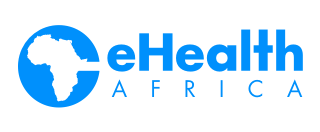By Mohammed Bello, Tope Falodun and Busayo Fashoto
Remote Assessment of Energy Gaps in Selected Health Facilities: Identifying Potential for Alternative Energy Sources (Part 2)
Energy access is needed to maintain health, especially during pandemics. A prompt emergency response also depends on reliable energy access; health facilities have two main energy requirements: electricity for health services and medical equipment and thermal requirements related to sterilization, space and water heating, and incineration. However, lack of energy access poses additional challenges for the provision of emergency care services and the functioning of intensive care units. When basic energy services are unavailable, essential components of emergency responses become compromised, including night-time care, refrigeration to keep samples, sterilization facilities, or electricity to power simple medical devices.
This expanded phase was implemented in Nasarawa states and is also part of the Nigerian Energy Support Programme (NESP), a technical assistance program co-funded by the European Union and the German Government and implemented by the Deutsche Gesellschaft fürInternationaleZusammenarbeit (GIZ) GmbH in collaboration with the Federal Ministry of Power (FMP), in partnership with eHealth Africa. It was conducted in close cooperation with geospatial data experts from INTEGRATION energy and environment. Still part of the effort of the NigeriaSE4ALL to bring you the most up-to-date, ground-truthed, electrification data available in Nigeria.
Following the successful first phase remote survey of 291 health facilities in Kano and Osun states in September 2020, INTegration contracted eHA to conduct a second phase of the remote survey in 300 Health facilities (HFs) of Nasarawa state. This next project phase analyzes the energy status of communities in Nasarawa state.
In recent times Online surveys have been the most popular way of conducting survey research as opposed to the traditional face-to-face surveys widely used before now. Although the face-to-face survey gives you more advantages in capturing additional emotional and behavioral clues, online surveys are cheaper. The migration in recent times to remote surveys is a result of the migration of many organizations to digital solutions. This type of survey is less expensive and gives you some of the elements obtainable in the traditional face-to-face survey, such as the accuracy and efficiency of the data gathered. It is also reliable in security-challenged environments. This result cannot be achieved without the expertise of agents trained to perform all the aforementioned. At eHealth Africa (eHA), we have specially trained helpdesk agents specifically for these purposes. In addition, our specially trained GIS and program delivery staff for the same purpose. They work collaboratively with stakeholders/beneficiaries to get accurate and efficient data based on planned activities. The methodology and learnings from the first successful survey led to the successful planning of activities to conduct the grid supply quality in this second phase.
The following activities led to the success of the second phase survey in the 13 LGAs in Nassarawa State;
Engagement with the state Team; Trained program staff to conduct a high-level stakeholder engagement with the state to introduce the project to the state team, get their buy-in, and discuss necessary data needed for the successful survey implementation.
Identification of Health Facility OICs Lead; following the high-level engagement is the identification of the health facilities officers in charge leads. These are chairpersons of each LGAs OICs responsible for all OICs under their jurisdiction. They assist in reaching out to the OICs to pre-inform the OICs of the implementation commencement and are relevant in following up with the OICs where the latter are unreachable.
Health facility data gathering, verification/validation, communication with the LGA leads for HFs list sharing. HFs were then sorted, and some HFs not included on the list were verified following validation of all the selected HFs.
Training helpdesk agents for a successful survey; The eHA helpdesk agents experts were trained on the survey tools and how to administer them. This includes what to look out for, understanding the tools, and further probing where necessary.
Conducting remote Survey; We completed the survey within three weeks of the project implementation with the helpdesk team working collaboratively with the GIS and program team to ensure the activity's success.
Continuous communication/collaboration with the state team; The program team continued to communicate with the state team regularly to escalate issues encountered and collaboratively sought solutions to such problems.
Challenges:
There is no activity without its peculiar challenges; however, the excellent collaboration between the program team and the LGA/State team enabled the team to proffer solutions to address challenges such as unreachable OICs, wrong numbers of OICs, wrong OICs in actual HFs, non-network communities, etc.
Despite the challenges mentioned above, the lessons from the first phase of the project and other similar projects gave room for the team to be prepared for risks and challenges ahead of implementation. This led to about 85% HFs data gathered at the end of the first two weeks, with only the unreachable HFs due to the earlier listed factors. Communication platforms include Whatsapp chat, voice calls, SMS messages, etc. Intensive follow-up and the positive relationship between the team and the state team assisted greatly in successfully implementing the survey. At the end of the 3rd week, the group gathered the entire 300 HFs data, including geo-coordinate for HFs initially without geo-coordinates. You are assured of the cost efficiency, especially considering Nigeria's current insecurity challenges.
The Program Partners


